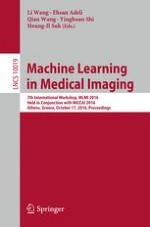2016 | OriginalPaper | Chapter
Tumor Lesion Segmentation from 3D PET Using a Machine Learning Driven Active Surface
Authors : Payam Ahmadvand, Nóirín Duggan, François Bénard, Ghassan Hamarneh
Published in: Machine Learning in Medical Imaging
Publisher: Springer International Publishing
Activate our intelligent search to find suitable subject content or patents.
Select sections of text to find matching patents with Artificial Intelligence. powered by
Select sections of text to find additional relevant content using AI-assisted search. powered by
